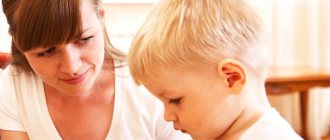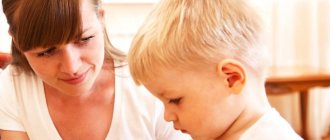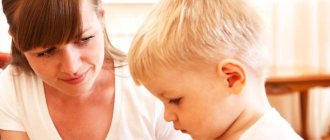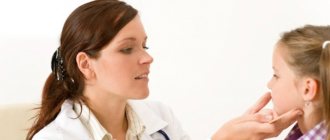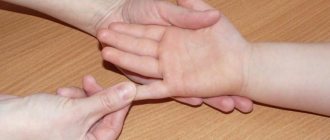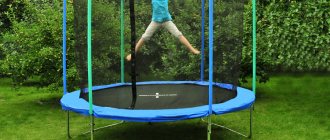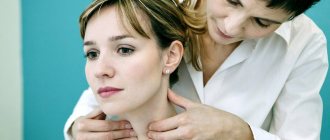Indications for testing
Severe speech disorders are often accompanied by problems with the nervous system. With dysarthria, the parts of the brain responsible for the innervation of muscles are affected. With this pathology, children cannot switch articulatory postures or feel subtle movements of the tongue and lips.
The leading defect is a violation of the phonemic aspect. Child says:
- indistinct;
- distorting sounds;
- unimpressive.
Vocabulary and grammar do not always suffer. When pronouncing a sound, the tongue deviates to the side or is limited in its movements. The tip protrudes between the teeth, that is, interdental pronunciation appears.
In case of severe disorders, asymmetry of the lips and a tense, balled tongue are noticeable (or it may be sluggish and relaxed). The erased form of dysarthria is difficult to determine, since only the pronunciation of 1-2 groups of sounds suffers.
Without probe massage it will not be possible to correct any form of dysarthria. Without it, producing sounds will take several years, and in most cases the result will be zero.
The use of massage probes to correct dyslalia is controversial. If there is a violation, only the pronunciation side of speech suffers. Massage strengthens the muscles of the articulatory apparatus, prepares them, and speeds up sound production. Some speech therapists are of the opinion that this is unnecessary.
With dyslalia, the hyoid ligament may be shortened. It limits the mobility of the tongue, a number of sounds are disrupted (sonoras, hissing). It is advisable to surgically trim it, but not all parents agree to this. Therefore, the frenulum is stretched with a probe; with a mild degree of the defect, its elasticity can be significantly improved.
Speech therapy probe massage is prescribed for alalia. With this problem, certain areas of the cerebral cortex are affected. The child has normal physical hearing, but at 4 years old he does not speak. In the motor form, the baby understands spoken speech, but uses gestures himself.
Massage stimulates the flow of signals into the brain, which promotes the development of the affected areas. After the course of treatment, onomatopoeia appears.
The cause of rhinolalia is defects in the structure of the speech apparatus (cleft lip, gums, palate). After the operation, scars remain that interfere with the mobility of organs. Probes are used to knead the seams and stimulate muscle function.
Dyakova recommends probe massage to correct stuttering. The defect is based on seizures of various origins. Due to muscle tension, it is difficult for a person to say something. Massage is used for relaxation.
Face massage
A classic massage option that is suitable for children with any degree of dysarthria. Carry out this type of vibration therapy with gloves. Remove jewelry and trim your nails short. Repeat all movements 3-5 times. Increase the duration of the procedure gradually.
The movement pattern is as follows:
- The forehead is kneaded smoothly from the central point to the temples. Press into your head with 2-3 fingers. Press your palm tightly, but not too hard.
- From eyebrows to hair, move in waves with all your fingers. Stroking movements.
- Stretch the cheek muscles from the mouth to the temples, from the cheekbone down to the lower part of the face.
- Rub the muscles on the wings of your nose up and down smoothly.
- Stroke the nasolabial fold to the wing of the nose to the corners of the lips.
- Stretch your lips with vibration movements. Move both hands along the top of your lips, spreading your fingers in different directions (from the middle to the corners).
- The eyelids are warmed up with circular strokes without pressure. Move your fingers clockwise around the eyes, then back.
- Rub your chin.
- Stroke your ears.
If a child has facial asymmetry, a skew to one side, or muscles that are cramped, pay more attention to the affected side.
On a note! Be sure to include several facial massage techniques in your treatment for cortical dysarthria before kneading your tongue.
General recommendations for conducting
The duration of the course is calculated individually. On average, 10 procedures performed every other day are sufficient. Between cycles there is a break of a month. Some speech therapists prefer to include massage before each session.
The duration of the procedure depends on:
- from age;
- degree of defect;
- personal characteristics.
The minimum time is 5 minutes, the maximum is 25. The impact should not cause pain, slight discomfort is allowed. Children may be afraid of probes because they resemble medical instruments. You can let them touch them, play with them, or have a session with toys.
In case of negativism, hysterics, aggression, the first sessions are kept as short as possible. Start by stroking the lips, cheeks, and tip of the tongue. With a pronounced gag reflex, the effect begins with a light one, gradually moving deeper into the mouth.
Massage sessions are carried out in a well-ventilated area. It should be warm, bright, cozy.
Tongue massage
It is important for weakness of the muscles of the main speech organ, insufficient mobility of the lingual muscles, paresis and paralysis. Speech therapists and speech pathologists use several techniques for kneading an unruly tongue. Let's talk about each technique in more detail.
Massage with a toothbrush
To knead the muscles of the tongue and cheeks at home and in classes with a professional, you can use a regular toothbrush. The technique of performing the treatment procedure consists of the following stages:
- Place a paper napkin under your child's tongue. It is needed to absorb excess saliva. If moisture accumulates in your mouth too quickly, change your napkin more often.
- Ask your baby to relax his tongue.
- Make circular kneading movements along the body of the speech organ.
- Then intermittent strokes along the inside of the cheeks, over the entire area of the tongue. It's like you're cleaning something off of him. Be sure to use this movement option for bulbar dysarthria.
- Ask the child to tense his tongue and lift it up slightly.
- Massage the hollow under the jaw. Make movements smoothly, without increased pressure.
Important! For massage with a brush, buy a soft version of tools with smooth and even bristles, so as not to damage the oral mucosa and not to scare the child.
Tongue massage with fingers
Effectively helps relieve hypertonicity of articulatory and facial muscles. It is carried out using a handkerchief, cloth napkin, massage finger pads. The sequence of actions for an adult is as follows:
- Help your child relax his tongue muscles. Take the organ with two fingers, twist it, and lightly tap its surface.
- Pull the tongue by the tip, pressing with two fingers from below, one from above.
- Grasp the middle part. Lift and pull forward. Hold the position for 1-2 seconds.
- Hold your tongue near your lips with one hand. With the fingers of your other hand, squeeze its body pointwise to the root. Repeat forward movements in the opposite direction.
- Turn the tongue with your fingers and place it on the edge. Then to the other side.
- Don't forget to tone your lips. Tap them with your fingertips, roll them into a tube, and stretch them toward your nose.
Perform logomassage with your fingers 1-2 times a day for a week or two. The duration of the lesson depends on the age and temperament of the child.
For preschoolers, it is enough to stretch the lingual muscles for 10-15 minutes a day. Choose 2-3 exercises. Repeat them 30 times during each lesson. The next day, change the set of exercises.
Probe massage
Tongue massage for dysarthria using special instruments—probes—developed by Doctor of Pedagogical Sciences, Elena Viktorovna Novikova. A specialist or parent will need a set of tools - 8 copies. The probes have different shapes: hatchets, balls, forks, snail, fungus.
Instrumental speech therapy massage for dysarthria is carried out in courses. For severe defects, 2-3 weeks daily, then rest for 1.5 months. Then repeat the course.
The method of treating speech defects using probes involves the following types of tongue warming:
- Move the ball tool along the body of the tongue 8-10 times.
- Using a plastic probe, move it pointwise from root to tip 8-10 times.
- Stroke the transverse lingual muscles with a ball tool 6-8 times.
- Take a needle-shaped probe. Tingle the perimeter of your tongue for 10 seconds.
- Find dimples in the sublingual area. Use a ball probe and make counterclockwise turns in the recesses. The maximum time of pressure on the point is 10 seconds.
- Press and comb the tongue with a ribbed probe and a spatula on all sides.
During the procedure, it is better for the child to take a reclining position and place a small pillow under the neck. If a preschooler complains of pain, stop the process or relieve pressure on the speech organ.
On a note! To understand the technique and principle of performing probe logomassage, we recommend reading the book by E.V. Novikova “Probe massage” from parts 1 to 4. The manual is illustrated and is ideal for self-teaching parents using pictures. Or a textbook for speech therapists by O. G. Prikhodko “Speech therapy massage.”
Probe kit
Speech therapy probes for producing sounds (authored by Rau) are not suitable for massage. A special set was developed by E. V. Novikova. It includes 8 main probes plus 4 additional ones. A patent for the development was received in 2000.
Probes are used to work with articulatory organs and the forearm. Stimulating the muscles of the dominant hand improves motor skills and promotes handwriting development.
The first tool is a fork , which looks like two blunt needles slightly apart to the side. A slight tingling sensation has an activating effect.
The second instrument is the eight . At the end there is a round loop that “grinds” the muscles.
The third, fourth, fifth tools are “sleighs” of different sizes. The shape of the probes resembles the rounded runners of a sled, hence the name. You can work with either side of the tool.
The sixth tool is a hatchet , which looks like two tightly pressed loops. Used for pressing on the surface of organs, sliding. Normalizes tone and increases muscle mobility.
The seventh is a cross, the loops are rounded and intersecting . It is used to stimulate the muscles of the tongue and develop its elevation.
The eighth tool is a pusher , a small loop raised at a right angle to the probe handle. Allows you to stimulate mobility and elasticity of muscles. When you press on the tongue, it creates tension; after the pressure is removed, the organ relaxes.
The ninth tool (additional) - tweezers , looks like two large rounded loops located parallel to each other. It is convenient to take the tongue with a probe and gently move it.
The tenth tool is a pull-up tool that looks like a low, wide frame. Used to stretch the frenulum.
The eleventh tool is a swan , a small loop, bent at the base, after which there is a small vertical section of the probe, which is bent at a right angle to the probe handle. Massages the palate, eliminates salivation.
The twelfth is sliding, looks like an elongated triangle with round corners. Used for sliding movements.
Some authors made their own adjustments to the set of massage probes. Vorobyova together with Krupenchuk created the author's set. It consists of 9 instruments. The creation of probes with different coils with small edges can be considered an innovation. This tingling sensation can effectively stimulate the nervous system.
Advantages and disadvantages of the technique
Probe massage allows you to speed up the production of sounds, facilitate the assimilation of articulatory gymnastics, and improve muscle function. Without it, correction of dysarthria will take 5-10 years.
It does not require special conditions, since it can be done by any speech therapist with the appropriate qualifications. In many correctional institutions, it is carried out by specialists as needed.
Massage helps relieve tone, hypersalivation, and improve fine motor skills.
It also has disadvantages. The significance and value of massage is overestimated - it is an auxiliary tool, not a panacea. Low-qualified speech therapists provide probe massage as a cure for all problems. In fact, the impact only provides the basis for producing sounds, which does not cancel the remaining stages of the work.
If used incorrectly, tools cause negativity in the child, since if they are not understood, they can cause serious harm. Some specialists act rudely and incorrectly, which leads to pain and the child’s refusal to study.
Contraindications
Massage courses are prescribed by a neurologist after a complete examination. It should not be used for epilepsy of various forms, as it can provoke seizures.
Temporary withdrawal is given for any infectious or somatic diseases. Probe massage should not be performed for stomatitis, caries, gingivitis, or skin diseases. Herpes and oral infections also serve as a medical outlet for procedures.
It should not be done if there is strong pulsation of the arteries, high blood pressure, or poor physical well-being.
If you have nausea, vomiting, or fatigue, you cannot conduct a session; it is better to reschedule it for another time. A speech therapist examines each child before performing a massage.
Speech therapy massage for children and adults in Khabarovsk.
By performing specific “home” exercises according to a pre-designed individual program, your child will learn to better control the muscles of the face and oral cavity. Our center employs some of the best specialists who will find an approach to every child. During the procedure, they carefully ensure that the child does not experience discomfort or various pain sensations, and does not get tired. The appropriate time for the procedure is 2 hours after eating.
On average, speech therapy massage for delayed speech development or other diseases is carried out in cycles of 10-20 procedures (depending on the disease), every day. For prevention, it is recommended to repeat the cycle after 1-2 months. The procedure time is 30 minutes. One of the characteristic features of this massage is that it can be performed at any time of the year.
Tool processing
Each set of tools is used once. Afterwards, it is soaked in a disinfectant solution, without removing it from it, and treated with cotton swabs for 30 seconds.
Then the instruments are washed under running water using such products as “Progress”, “Biolot”, “Astra”. Do this for 10 minutes.
The probes are washed in distilled water for 30 seconds. Finally, it is dried in a dry oven.
This is a standard method for sterilizing medical instruments. You cannot neglect it, as this is a violation of the law. Children may have various diseases; in the event of mass infection, there will be serious checks and investigations.
Carrying out at home
Massage has a serious impact on the body. The person who does it must have an appropriate medical education and constantly improve his qualifications. Speech therapists can only do speech therapy massage, both probe and manual.
You should not try to do it yourself. Before the start of the course, the specialist examines the child, examines the articulation organs, determines the tone, and compiles a selection of exercises. A full set of probes is not always needed; often 4-5 are enough.
It is easier for children to tolerate the procedure in another room. Psychologically, it is easier for them to endure discomfort for a while.
The degree of impact of the instruments is chosen by a specialist. Basic techniques:
- pressure;
- slip;
- compression;
- trituration.
The choice of technique is made by a speech therapist. It will be difficult for a parent without special knowledge to choose one. Probe massage can cause harm - tearing the frenulum, causing hypertonicity, strengthening the gag reflex, etc.
Indications for speech therapy massage.
As mentioned at the beginning, speech therapy massage will be useful for children with delayed psycho-speech development, cerebral palsy, but it is also worth noting that it is recommended for:
- Detection of speech development delays, because it stimulates spoken language.
- The presence of dyslalia in a child.
- The need to improve the psycho-emotional state.
- Stuttering.
- The need to increase the elasticity of muscle fibers.
The procedure will be useful for children who have mental retardation. The process of emotional and intellectual lag is easily reversible with regular sessions. Massage will help not only cure dyslalia, which is characterized by distortion of the pronunciation of various sounds, but also help overcome drooling.
Developed speech has many positive effects: clear perception of information, the ability to correctly express one’s thoughts, fast reading, development of thought processes, increased learning ability.
